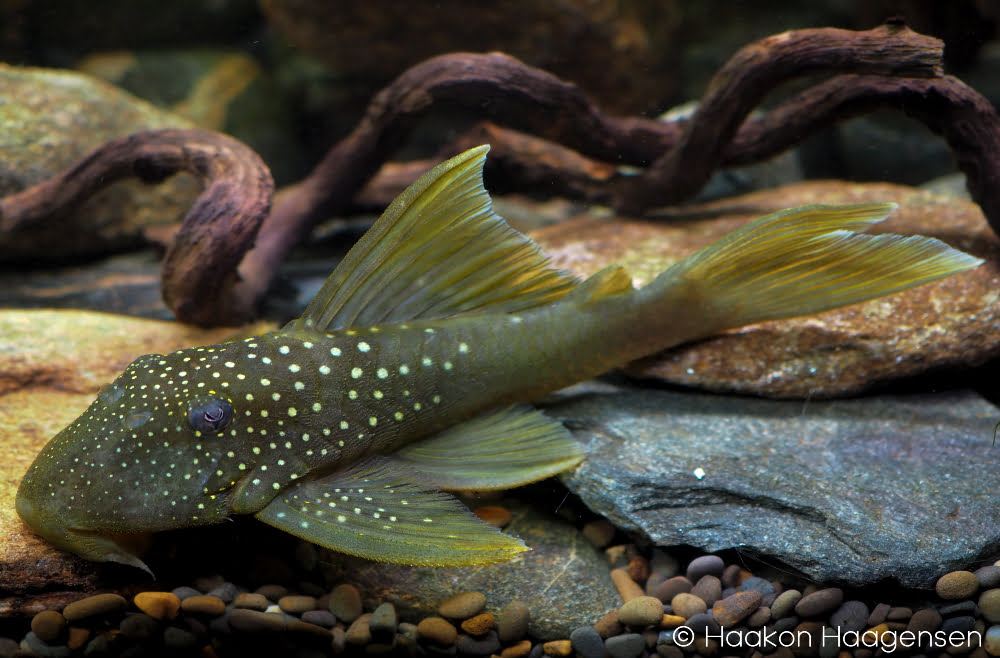
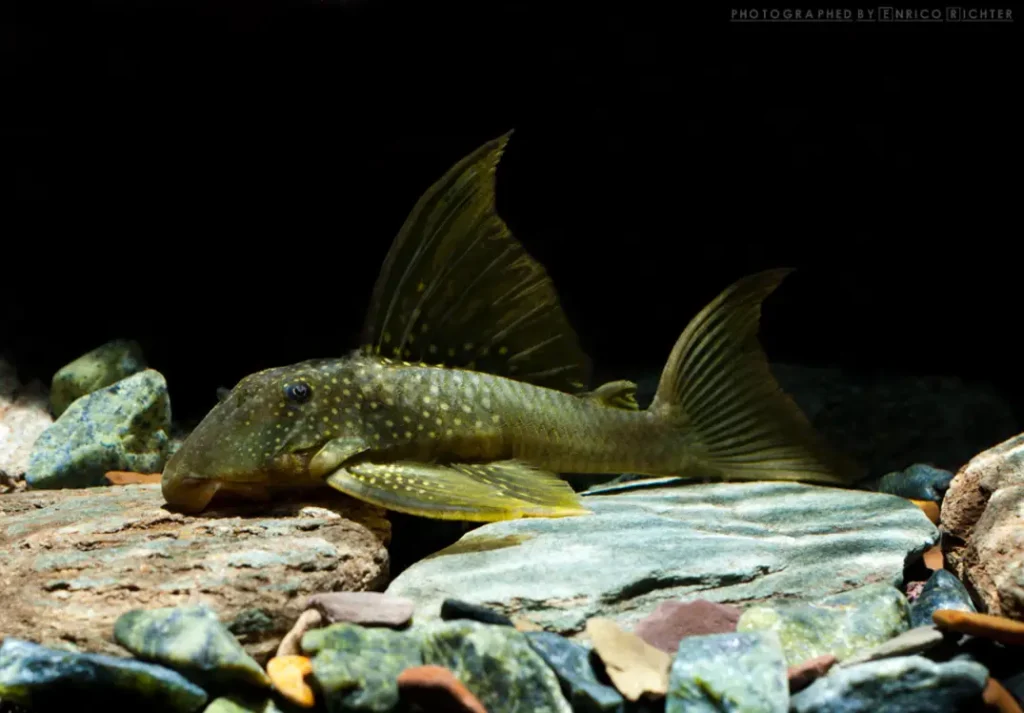
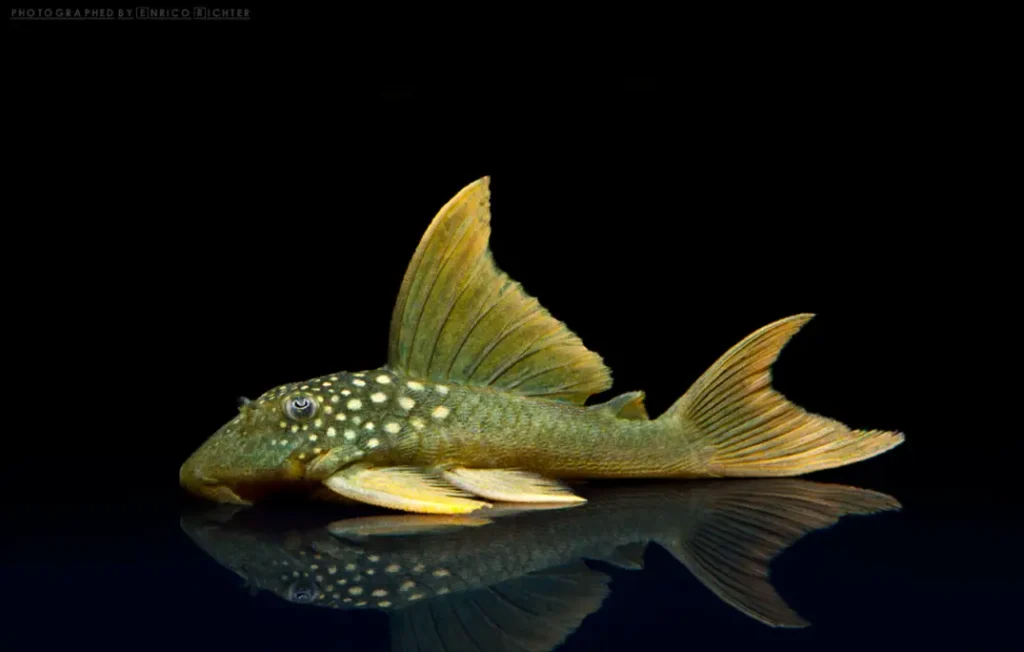
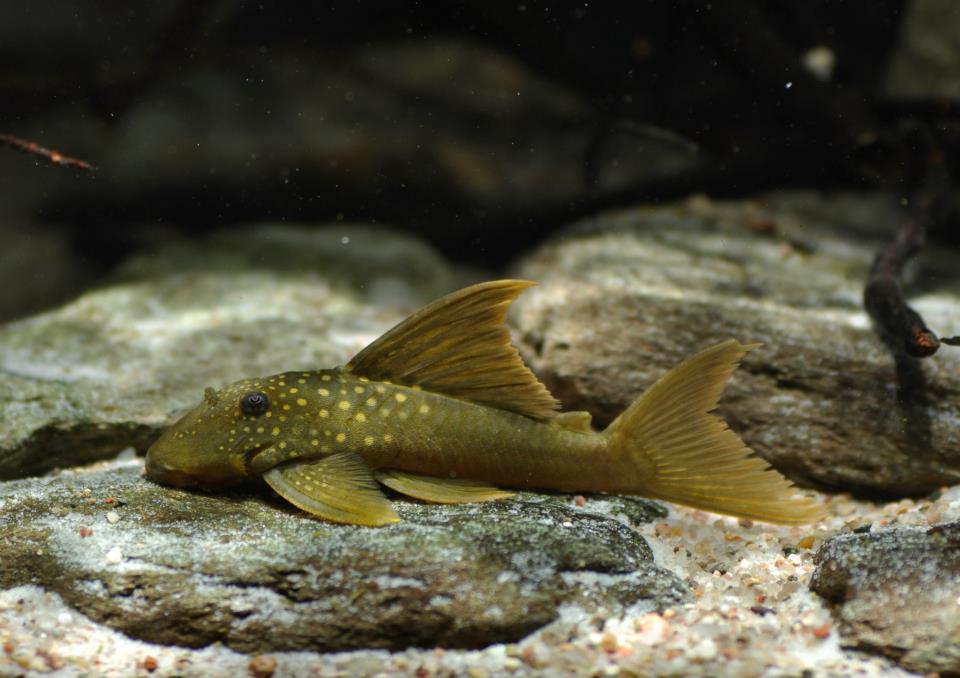
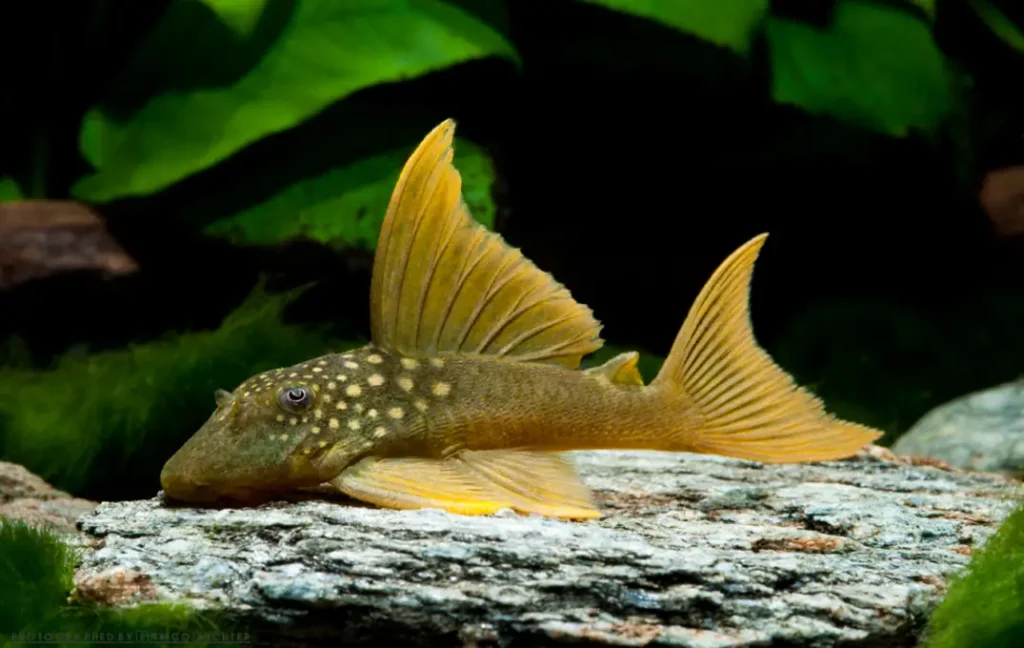
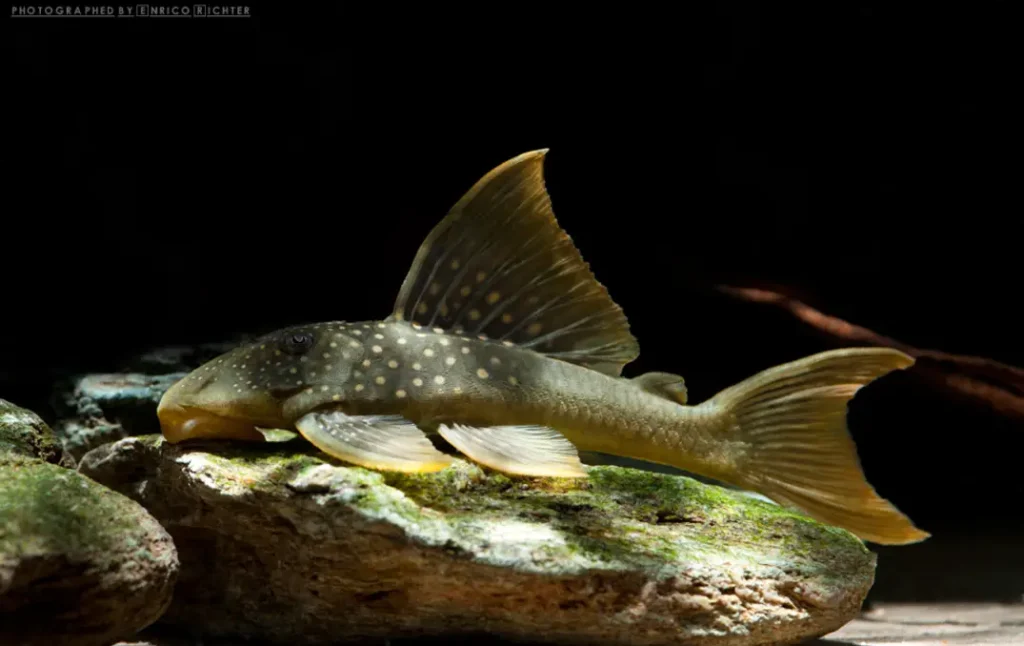
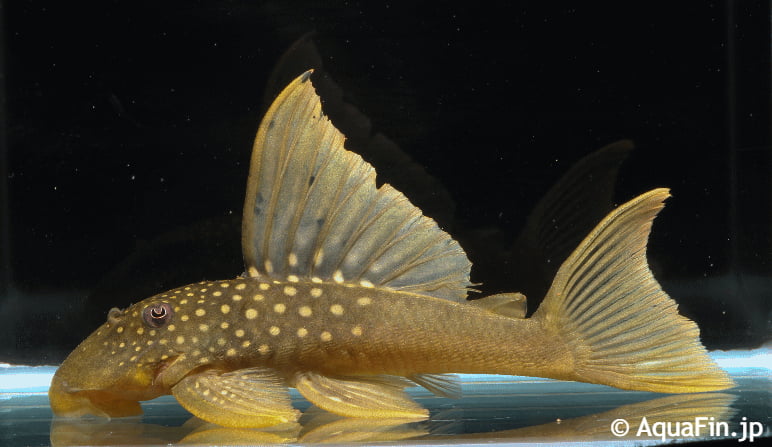
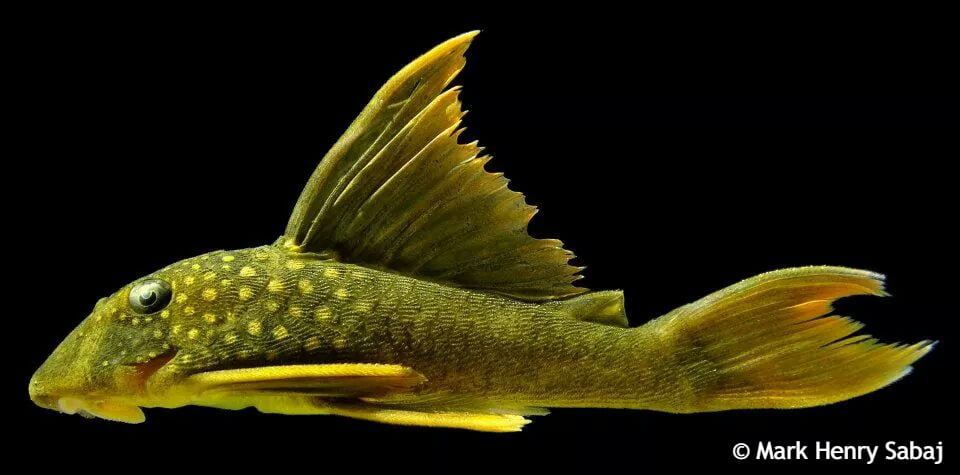
It took a while for the worldwide Pleco community to realize that there were two different species exported from Colombia as L200. The original one, Hemiancistrus subviridis, used to be more common in the trade. Nowadays, both are regular exports. Baryancistrus demantoides, often traded as L200 “Hi-fin” or “L200a”, is a very beautiful catfish with its yellow colour and big dorsal fin. Once settled it’s a quite hardy species when kept under proper conditions. They may eat your swordplants, so be aware when keeping them in a planted tank.
Facts:
Name: Baryancistrus demantoides (Werneke, Sabaj, Armbruster & Lujan, 2005)
Trade names: L200 “Hi-fin”, L200a
Origin: Rio Atabapo, Rio Ventuari, Venezuela.
Maximum TL: 20 cm
Baryancistrus demantoides is very similar to Hemiancistrus subviridis (L200), which it lives syntopic with in the wild. The easiest way to tell them apart is by looking at the dorsal fin; in B.demantoides there is a membrane which connects the dorsal and adipose fin. Also, B.demantoides has a less circular mouth.
B.demantoides are true vegetarians, and should be fed a varied diet of vegetables and pellets based on green matter. Some frozen foods and more meat-based dry food can be offered occasionally. It doesn’t grow as large as its Brazilian cousins like B.xanthellus (L18) and B.chrysolomus (L47), but should still be offered a spacious tank. Clean, well-filtered, oxygen-rich, warm water is required. Breeding has occured, but is rare. The male, recognized by its broader head and stronger odontodal growth, guards the offspring in a suitable cave.
More info:
